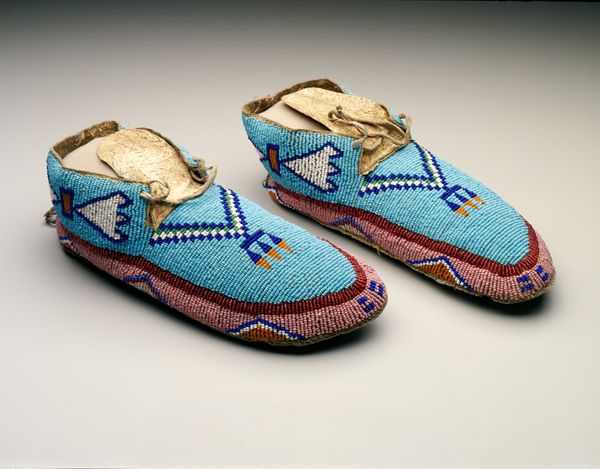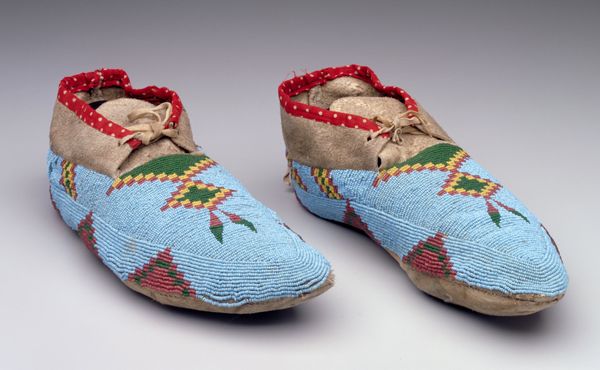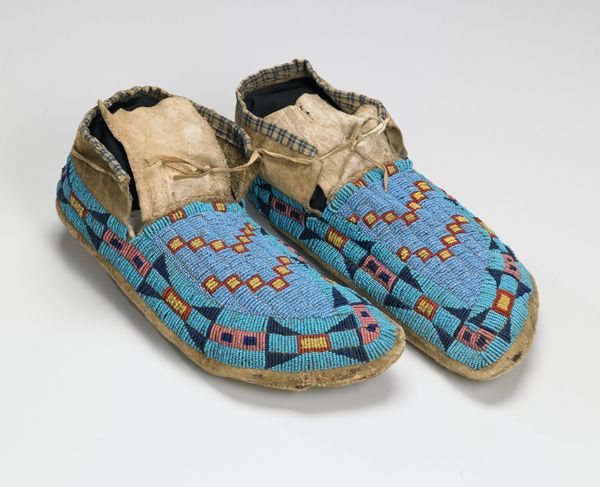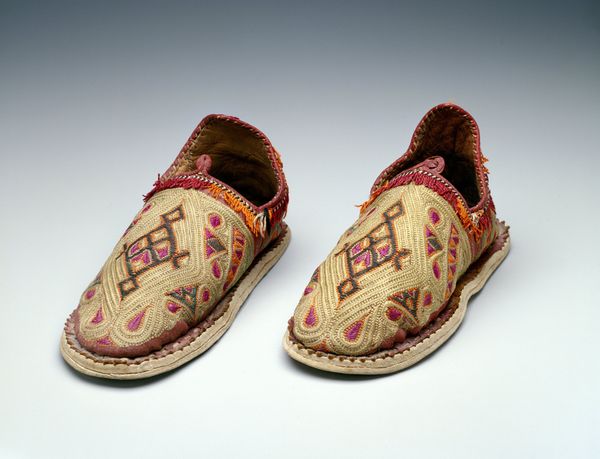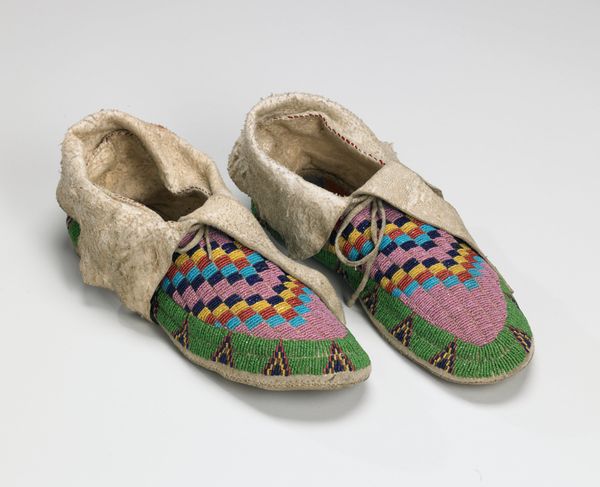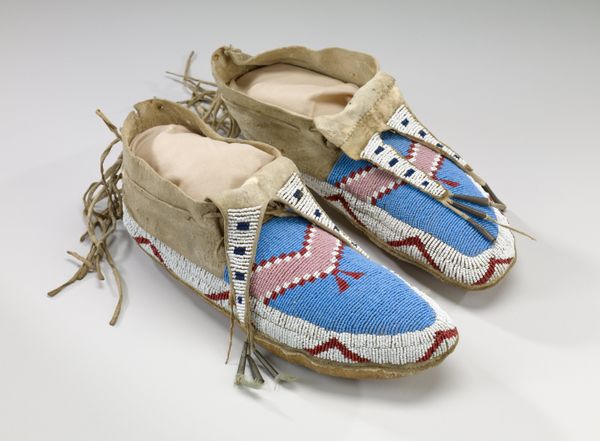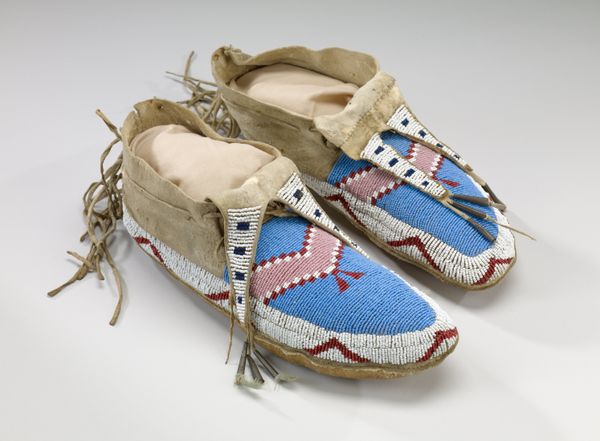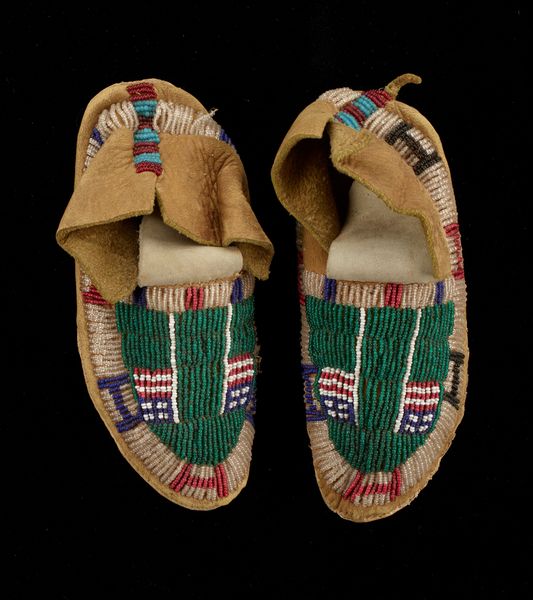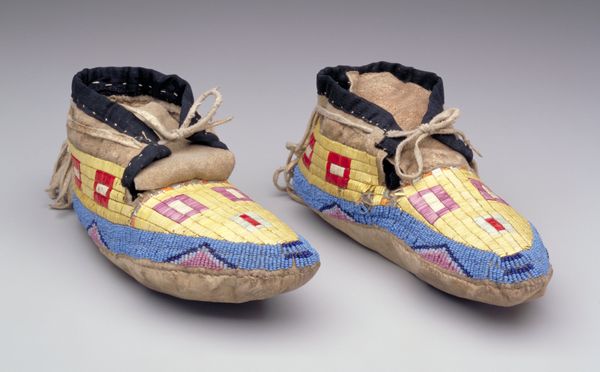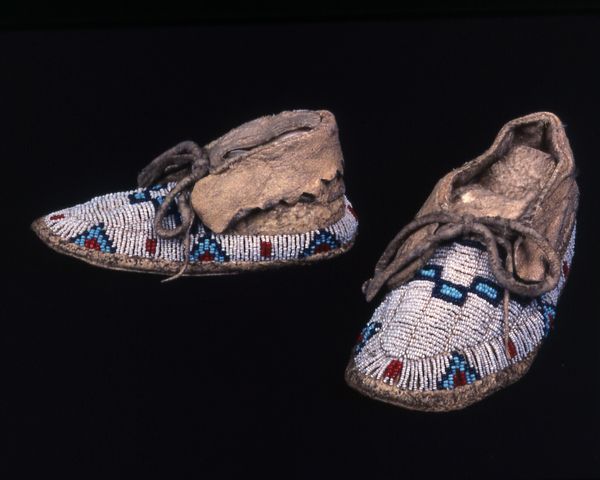
textile
#
textile
#
geometric
#
decorative-art
#
indigenous-americas
Dimensions: 3 7/16 x 3 7/16 x 8 1/2 in. (8.73 x 8.73 x 21.59 cm) (a:)3 3/16 x 3 1/2 x 8 15/16 in. (8.1 x 8.89 x 22.7 cm) (b:)
Copyright: Public Domain
Editor: These are "Moccasins," created sometime between 1890 and 1910 by an A'aninin (Gros Ventre) artist. The textile work, specifically the intricate beadwork, strikes me. It's amazing to consider how these functional objects were elevated through art. What aspects of their cultural context are most relevant in understanding their artistic merit? Curator: That’s a great question. The moccasins tell a complex story. Considering the period of their creation, we have to remember the societal pressures impacting Indigenous communities. By the late 19th century, many Indigenous peoples were confined to reservations. The US government's assimilation policies often targeted cultural practices. Objects like these moccasins became not just items of use but symbols of resistance, artistic expression, and cultural continuity in the face of suppression. The artistry here represents a refusal to surrender identity. Does that make sense? Editor: Yes, that's helpful. So, seeing this beautiful piece involves looking beyond aesthetics. Curator: Absolutely. The deliberate artistry in traditional crafts offered a subtle, but powerful, counter-narrative to dominant, often negative, portrayals of indigenous peoples. And think about where such objects ended up: ethnographic displays often reinforced a narrative of the “vanishing Indian.” Editor: So, in a museum today, is there a way to reclaim and subvert these intentions through display? Curator: Absolutely! Museums increasingly collaborate with Indigenous communities. Consultation allows contemporary community perspectives to shape narratives. Exhibition designs seek to challenge assumptions and provide context and nuance. It's vital we don’t let their artistry be misinterpreted or used to support damaging colonial narratives. Editor: That’s an interesting lens for how institutions deal with cultural material now. I learned a lot. Thanks. Curator: Me too. Thinking about context always brings new insights.
Comments
No comments
Be the first to comment and join the conversation on the ultimate creative platform.

